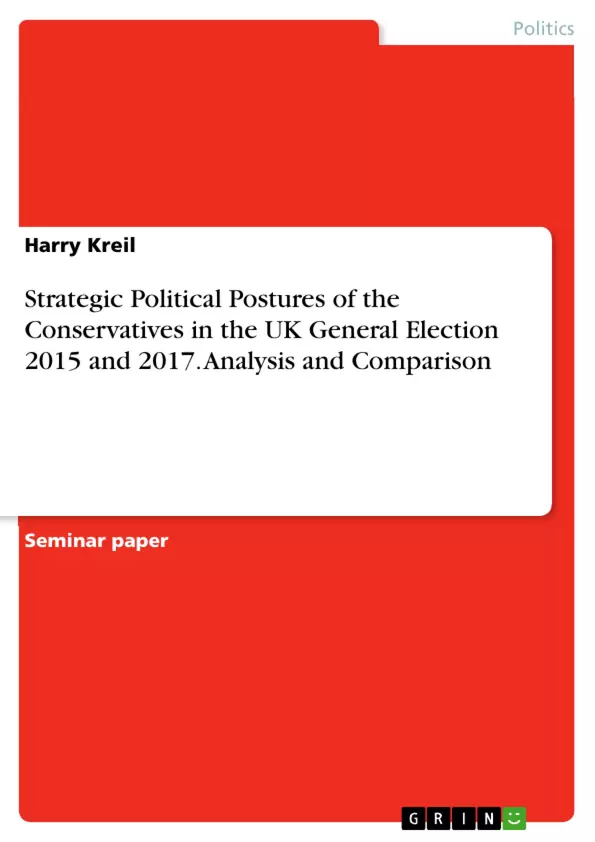This paper is motivated by the growing interest in the strategies that political actors and parties adopt to be successful in the electoral market. This work focuses on the election campaigns of the Conservative party in the United Kingdom´s general elections 2015 and 2017. In particular, it tries to identify which strategic orientation the Conservatives applied in their approach towards the electoral market. The degree of strategic orientation of a party with regard to political marketing management can be operationalized by the deployment of the Strategic Political Posture concept. After the Strategic Political Postures of the Conservative´s 2015 and 2017 election campaign are derived, both postures are compared, in order to make suggestions on possible reasons for a change in strategic orientation.
Inhaltsverzeichnis (Table of Contents)
- Introduction
- Strategic Political Postures
- Leading and Following
- Strategic Political Posture Typologies
- Strategic Political Posture of the Conservatives in the 2015 United Kingdom Election
- Strategic Political Posture of the Conservatives in the 2017 United Kingdom Election
Zielsetzung und Themenschwerpunkte (Objectives and Key Themes)
This paper examines the strategic political postures adopted by the Conservative party in the United Kingdom's general elections of 2015 and 2017. It utilizes the Strategic Political Posture (SPP) concept to analyze the party's orientation towards the electoral market and determine whether there was a change in strategy between the two elections. The analysis aims to identify potential reasons for any shift in strategic orientation.
- Strategic Political Posture concept and its dimensions
- Analysis of the Conservative party's SPP in 2015 and 2017
- Comparison of SPPs between the two elections
- Potential reasons for any change in strategic orientation
- Impact of the EU referendum on the Conservative party's strategy
Zusammenfassung der Kapitel (Chapter Summaries)
The paper begins with a theoretical overview of the Strategic Political Posture concept, outlining its two main dimensions: leading and following. These dimensions are further elaborated to create four distinct strategic posture typologies: The Convinced Ideologist, the Tactical Populist, the Relationship Builder, and the Political Lightweight.
The analysis then focuses on the 2015 general election campaign. The Conservative party's manifesto and overall approach are examined to determine their strategic posture. Based on the analysis, the Conservative party in 2015 is categorized as a Convinced Ideologist, characterized by a strong emphasis on leading and a low level of following.
The 2017 election campaign is then analyzed, focusing on the changes in the Conservative party's manifesto and strategic approach. The manifesto's focus on long-term perspectives and the party's adaptation to the EU referendum outcome suggest a shift towards a Relationship Builder posture, exhibiting high levels of both leading and following.
Schlüsselwörter (Keywords)
The core keywords of this paper include: Strategic Political Posture, leading, following, political marketing, election campaign, Conservative party, United Kingdom, general elections, 2015, 2017, EU referendum, manifesto, relationship builder, convinced ideologist, tactical populist.
- Arbeit zitieren
- Harry Kreil (Autor:in), 2017, Strategic Political Postures of the Conservatives in the UK General Election 2015 and 2017. Analysis and Comparison, München, GRIN Verlag, https://www.grin.com/document/427001



